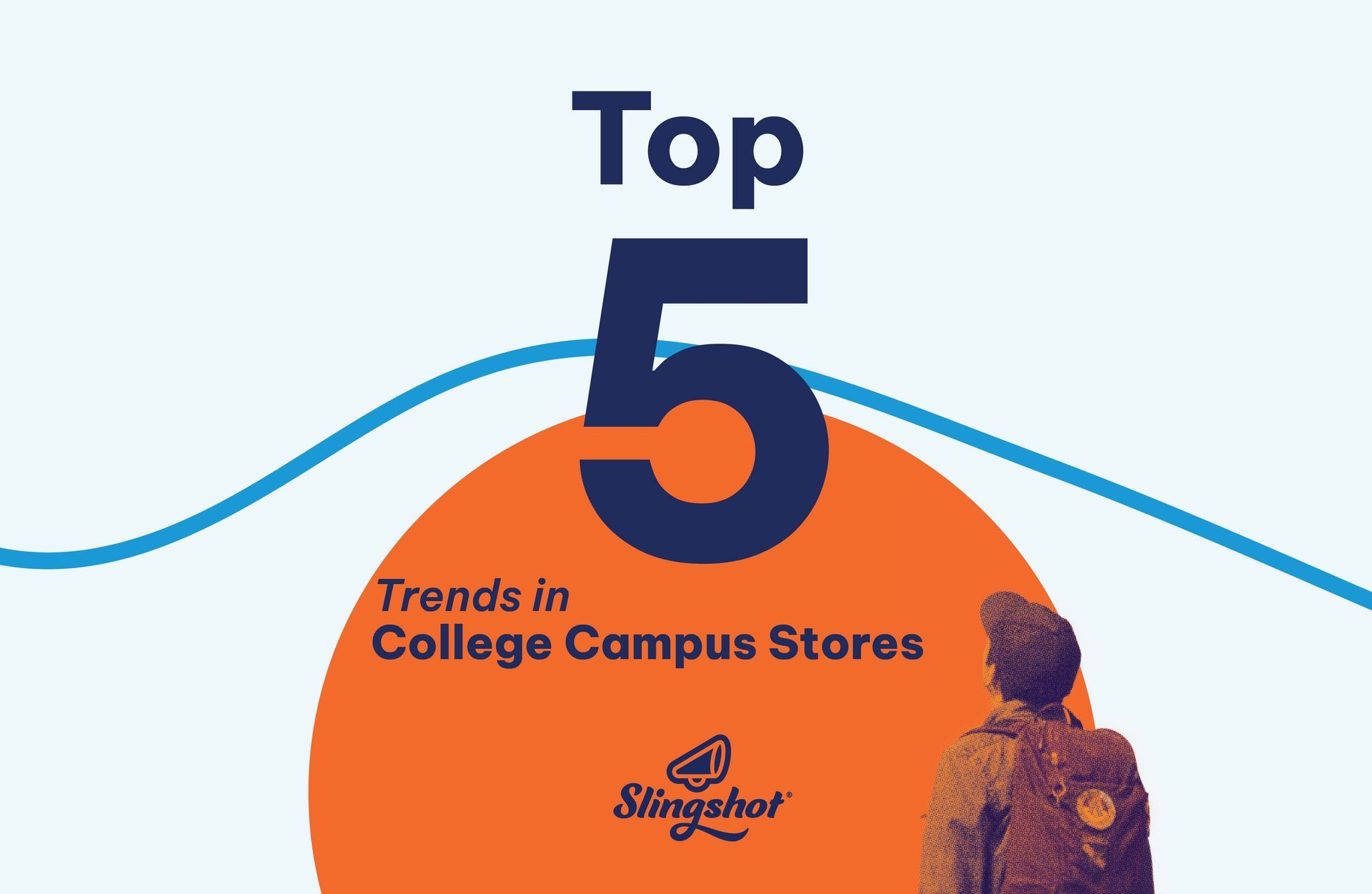The Future of Course Materials & the Campus Store: 2022 Blog Recap
In 2022, we revealed our predictions about the future of course materials and the campus store. From equitable access to electric skateboards, we believe disruption is the next great thing to happen for campus bookstores.
If you aren’t caught up, we’ve got you covered.
Here’s what we shared this last year:
4.) Is shipping the most important part of the course materials experience?
One of the key ingredients to cooking up a happy customer experience at Slingshot is our logistics strategy. We start with distribution centers, which relieve individual campus stores from the burden of storing inventory throughout the year. We also care about the student’s preference, and in all service models, students have the option of delivery to their home address, pick-up at the campus store, or delivery to their campus residence hall. Backed by the latest technology and innovation, institutions can leverage a solid logistics strategy to achieve on-time delivery and improve student preparedness for the first day of class.
Learn more about Slingshot’s
approach to logistics here.
3.) Contrary to some opinions, you don’t need try inclusive access before rolling out equitable access at your institution.
Equitable access actually provides solutions to many of the challenges institutions are facing—specifically solutions that inclusive access can’t tackle. Academic freedom, predictable course material costs, and the burden on students of acquiring their remaining materials are just a few. Skipping straight to equitable access reduces confusion and maximizes the financial and academic benefits for students and the institution.
See how
equitable access actually solves some of the challenges
presented by inclusive access.
The old “find and acquire” model is often the first test of every college student—a test of their resourcefulness, that is. This is neither an equitable nor an acceptable model if we want every student to start on even ground and have the fundamental tools necessary to succeed in academia. What does Moore say about the future of course materials, and how is our current trajectory impacting marginalized populations of students?
Learn more about Moore’s
predictions for the future of course materials.
2.) The top trend in campus stores right now isn’t adding but instead removing responsibility from students and staff.
The traditional counter service model places the burden of acquiring materials from the campus store on students, but today’s new subscription model removes course materials from the store floor and ships them directly to the student from a warehouse or distribution center. This creates a more optimized in-store experience and ensures on-time delivery of all required materials with less stress for students and store staff.
Read about
the other three trends
happening in campus stores today.
1.) Research Scientist Dr. Mike Moore believes IA, EA, and OER are changing the landscape for students and institutions.
The old “find and acquire” model is often the first test of every college student—a test of their resourcefulness, that is. This is neither an equitable nor an acceptable model if we want every student to start on even ground and have the fundamental tools necessary to succeed in academia. What does Moore say about the future of course materials, and how is our current trajectory impacting marginalized populations of students?
Learn more about Moore’s
predictions for the future of course materials.
Want to read more course materials news? See what else you may have missed on Slingshot’s website at
slingshotedu.com/news.











